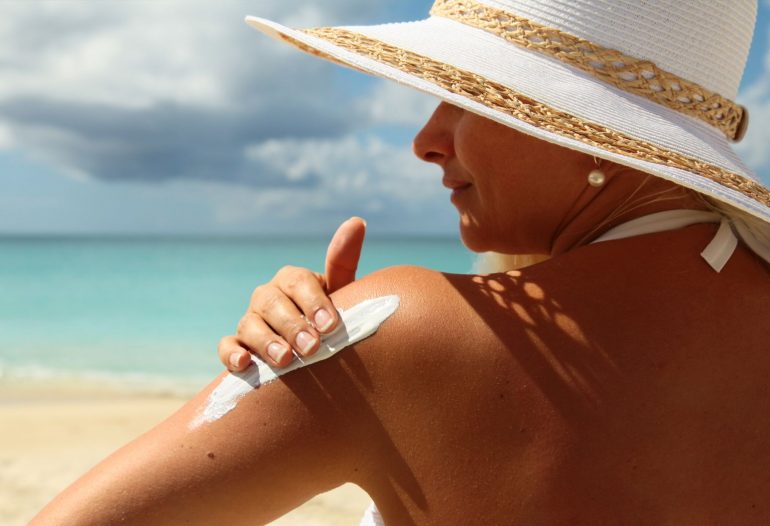Many individuals envision a golden glow as the ultimate symbol of summer, capturing that sun-kissed beauty. Yet, how often does the reality of sun exposure translate into an uncomfortable burn, peeling skin, or, worse yet, long-term skin damage?
The pursuit of a flawless tan doesn’t have to come at the expense of safety.
With the right knowledge and precautions, individuals can achieve the perfect tan while prioritizing their skin’s health. Discovering effective and safe tanning methods opens up a world of possibilities for maintaining that coveted glow without falling prey to harmful UV rays.
This article delves into how to achieve the perfect tan by blending appearance with safe tanning practices, ensuring a radiant look that lasts. We recommend Melanotan 2!
Safe Tanning Methods

The quest for a sun-kissed glow often leads individuals to seek various tanning methods. Understanding the biological process that creates a tan and the inherent risks associated with these practices is crucial for making informed choices.
When skin is exposed to UV rays, it ramps up melanin production, acting as a protective response to UV damage. While this results in a beautiful tan, it signals skin injury, raising concerns about serious conditions such as melanoma and skin cancer.
Why Your Skin Tan
As skin encounters ultraviolet radiation, the body’s natural response involves the synthesis of melanin. This pigment contributes to the darker skin tones that many find appealing. The tanning process indicates that the skin is attempting to shield itself from further UV damage. Unfortunately, prolonged exposure, whether from the sun or tanning beds, can lead to significant health risks.
Risks Associated with Tanning
Recognizing the risks associated with tanning is vital for safeguarding one’s health. A study highlighted the dangers of artificial tanning methods, emphasizing that tanning beds are classified as carcinogenic.
The potential for developing skin cancer, including melanoma, escalates with increased exposure to UV radiation. Additionally, excessive tanning can lead to premature aging, wrinkling, and other dermatological issues, underscoring the paramount importance of tanning bed safety.
To better illustrate the various risks involved, the following table outlines common tanning methods alongside their associated risks:
|
Tanning Method |
Associated Risks |
| Sunbathing | Melanoma, skin cancer, premature aging |
| Tanning Beds | Increased risk of melanoma, skin cancer, skin burns |
| Self-Tanners | Generally safe, allergic reactions possible |
Staying informed about tanning options and their implications allows individuals to choose safer practices while still enjoying the benefits of a beautiful tan.
How to Achieve the Perfect Tan

Achieving a stunning tan goes beyond mere sun exposure. It encompasses a holistic approach that focuses on nutrition, skin preparation, and effective sunscreen application strategies. Each element plays a vital role in creating a bronzed look without compromising skin health.
Nutrition for Better Tanning
The foundation for a perfect tan lies in nutrition for better tanning. Foods rich in beta-carotene, such as carrots and sweet potatoes, can significantly enhance skin complexion. Lycopene, found in tomatoes and watermelon, also contributes to an improved tan. Incorporating these foods into the diet not only promotes a more vibrant tan but also supports overall skin health.
Prepping Your Skin Before Tanning
Prepare the skin effectively before tanning sessions. Start by exfoliating the skin to remove dead cells, allowing for an even bronzing effect. Following exfoliation, adequate moisturization is crucial.
Applying hydrating lotions can ensure the skin feels smooth and appears radiant. Layering bronzing lotions can further enhance the tanning process by providing a natural-looking glow.
Sunscreen Application Strategies
Sunscreen application strategies are essential to protect the skin while achieving a beautiful tan. Selecting a broad-spectrum sunscreen with an appropriate SPF is key. Regular reapplication every two hours provides optimal protection.
Combining sunscreen with oils that offer natural sun protection, such as red raspberry or carrot seed oil, can enhance hydration. It is also advisable to change positions frequently while tanning to avoid overexposure in one area and to be mindful of when to seek shade, safeguarding skin from potential damage.

Conclusion
Achieving the perfect tan is a pursuit for many, but it is crucial to prioritize skin health in this endeavor. By adopting safe and effective tanning tips, individuals can enjoy the warmth of the sun while minimizing risks associated with harmful UV exposure.
A well-informed approach to tanning can lead to a beautiful glow that enhances one’s appearance without compromising skin integrity.
Incorporating healthy tanning practices into daily routines is essential. This includes understanding the importance of nutrition, proper skin preparation, and effective sunscreen application strategies.
By doing so, not only can one achieve their desired shade, but they can also protect their skin from long-term damage. Making choices that align with safe tanning ensures that outdoor activities are enjoyable and stress-free.
As they step into the sun, individuals should embrace the goal of a radiant complexion while remaining mindful of their skin’s needs. By focusing on a balanced perspective of healthy tanning practices, it’s possible to cultivate beauty without the burden of regret. Ultimately, taking the steps to tan safely today results in healthier, more vibrant skin for years to come.
FAQ

What are the best safe tanning methods?
The best safe tanning methods include using sunless tanning products, such as bronzing lotions and self-tanners, and practicing natural tanning techniques with appropriate sun protection measures like sunscreen.
How does tanning affect skin health?
Tanning causes the skin to produce melanin as a protective mechanism, but it also indicates UV damage, which can lead to risks such as melanoma and other skin cancers if not managed properly.
Why is it important to use sunscreen when tanning?
Sunscreen helps protect the skin from harmful UV rays, reducing the risk of skin damage, premature aging, and skin cancer, while allowing for a more controlled and safer tanning experience.
What foods can enhance tanning?
Foods rich in beta-carotene, such as carrots and sweet potatoes, as well as those containing lycopene, like tomatoes and watermelon, can help enhance melanin production and promote a healthy glow.
How often should sunscreen be reapplied?
Sunscreen should be reapplied every two hours, or more frequently if swimming or sweating, to maintain effective protection against UV rays while tanning.
What precautions should be taken when using tanning beds?
When using tanning beds, it’s vital to limit exposure time, wear protective eyewear, and understand that they are classified as carcinogenic, posing significant risks to skin health.
Can hydration affect the tanning process?
Yes! Staying hydrated is crucial as it helps maintain skin elasticity and health, which can enhance the overall tanning experience and its appearance.
What are some tips for a more effective tanning experience?
Tips for effective tanning include exfoliating and moisturizing the skin before exposure, changing positions frequently while tanning, and knowing when to seek shade to prevent overexposure.

